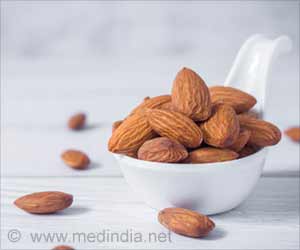
‘More pronounced differences in food image stimuli are required to stop the imagery-induced effect of complete satisfaction with food.’
Tweet it Now
The participants who were shown the picture many times also chose a smaller portion than those who had only seen the picture three times, when we subsequently asked about the size of the portion they wanted.Tricking your Brain into Feeling Full
It may sound strange that the participants felt full without eating anything. But this is quite natural. How we think about food has a large influence on our appetite. Your appetite is more closely linked with your cognitive perception than most of us think.Studies have shown that if you make people aware of the different colors of Jelly Beans, even if they have eaten all they can in red Jelly Beans, will still want the yellow ones. Even if both colors taste completely the same.
Within brain research, these findings are explained with the so-called grounded cognition theory. You will receive a physiological response to something you have only thought about. That's why we can feel fully satisfied without eating anything.
This is not the first time to discover that we can get feel full by looking at pictures of food. Other research groups have previously shown this. The new research published in the journal Appetite examined the number of repetitions needed – and whether variation in the images removes the sense of satiety.
To investigate whether variation in food completely removes the sense of satiety, researchers designed several online experiments. They ended up getting more than 1,000 people through their digital experiments.
Advertisement
The group which had seen 30 images of orange chocolate buttons, chose a smaller amount than the other two groups. Afterward, they repeated the experiment. This time with M&Ms in different colors. The colors did not change the result.
Advertisement
Imagined Eating Could Be Used as a Weight Loss Strategy
Since 1975, the number of overweight people worldwide has tripled. According to the WHO, obesity is one of the biggest health challenges facing humans. And the reason why we become too fat is that we eat too much food and too much unhealthy food and we do not take enough exercise.This is where results come into play. Perhaps they can be applied as a method to control appetite. You will not save many calories unless you completely refrain from starting a meal. But perhaps the method can be used for this as well.
In the current period, social media can be a contributory factor in our becoming increasingly overweight. But it may also be the solution.
References:
- Variety Amnesia: Recalling Past Variety Can Accelerate Recovery from Satiation - (https://academic.oup.com/jcr/article-abstract/36/4/575/1788277?redirectedFrom=fulltext)
- Mind Over Stomach: A Review of the Cognitive Drivers of Food Satiation - (https://www.journals.uchicago.edu/doi/10.1086/693111)
- Imagined eating – An investigation of priming and sensory-specific satiety - (https://www.sciencedirect.com/science/article/pii/S0195666322005128?via%3Dihub)














